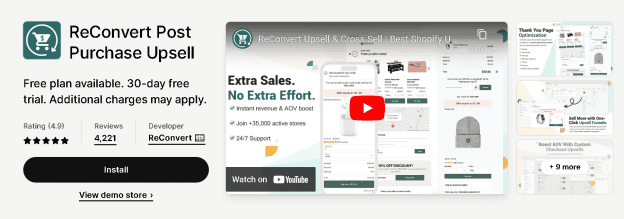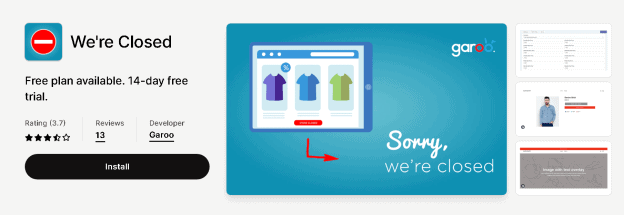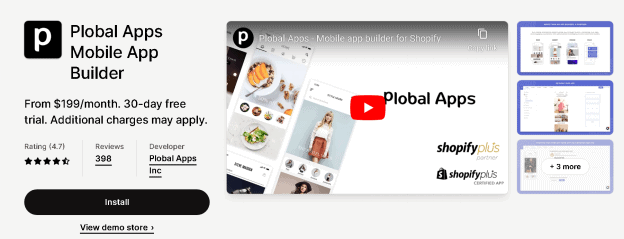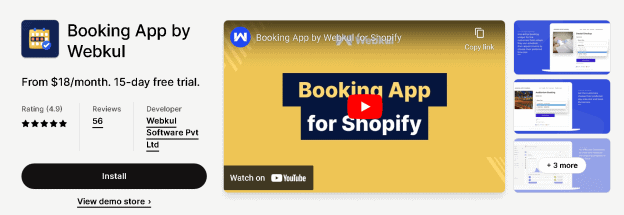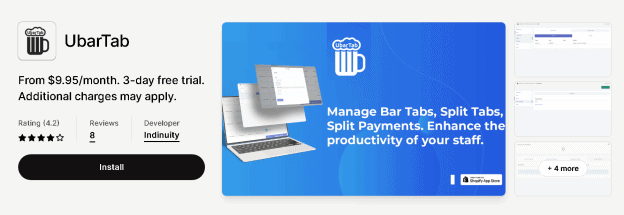If you’re questioning the necessity of a website for your restaurant, consider this: in an era where social media reigns supreme and delivery apps dominate the local food delivery scene, the value of a dedicated online presence might seem unclear. But the reality is more nuanced. A Deloitte survey revealed that 40% of people prefer ordering directly from a restaurant’s website or app, compared to a mere 13% who favor third-party delivery apps.
Moreover, research by PYMNTS on the restaurant industry indicates that 62% of customers discover restaurants through Google over social media. It underscores the importance of a robust online presence, which includes not only an Instagram account and a Google Business Profile but also a dedicated website. If the prospect of establishing a web presence seems daunting, this post will provide a step-by-step guide to get started with Shopify for restaurants, along with strategic tips to ensure its success.
Is Shopify for Restaurants the Right Choice?
Opting for Shopify, restaurants can enhance their eCommerce SEO, thanks to its intuitive interface and built-in optimization features, ensuring a strong digital presence.
In the crowded marketplace of e-commerce platforms, Shopify emerges as a particularly compelling choice for restaurateurs:
- Scalability: Shopify’s platform can effortlessly adapt and grow with your business demands.
- Cost-effectiveness: It offers a more economical solution compared to many of its competitors.
- User-friendly: The platform is intuitive, negating the need for advanced coding or development expertise.
- Customization: A rich array of apps is available, allowing for extensive personalization of your storefront.
- Support: Round-the-clock assistance ensures that help is at hand whenever needed.
Steps to Set Up Optimize Shopify for Restaurants
Establishing a restaurant website as part of your digital strategy can enhance your online ordering capabilities, provide an additional channel for customer engagement, and serve as a potential primary revenue stream. Below is a streamlined process for leveraging Shopify for your restaurant.
-
Create a Shopify Account
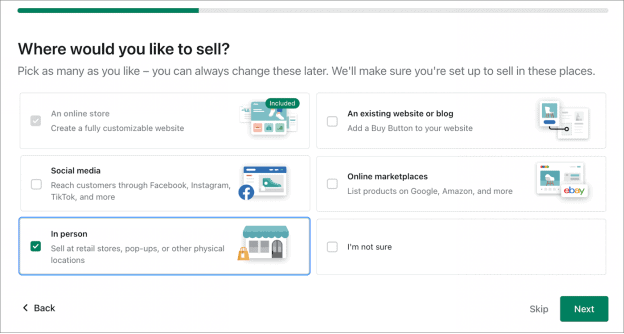
To get started with Shopify for your restaurant, the initial step is to sign up on the platform. The sign-up process involves answering some questions about your business to help Shopify customize its recommendations for you.
As a restaurant owner, you might not have specific answers to all the questions initially, but this shouldn’t hold you back. For now, indicate that you sell in person and skip the specifics. After signing up with your email or another method, you’ll need to choose a payment plan.
Shopify offers an introductory deal: $1 per month for the first three months. Following this introductory period, it’s wise to opt for the Basic plan, which costs $32 monthly or $288 if paid annually. This plan includes all the essential features a restaurant setting up on Shopify would need.
To further refine your operations, consider the analytics offerings. The Basic plan’s analytics section provides essential data like total sales and returns. It also allows for comparisons of these metrics over various time frames, by location, and according to how customers discovered your store, among other factors.
For more detailed sales reports, the Shopify plan is available at $92 per month. However, it’s generally recommended to start with the Basic plan and scale up as necessary based on your specific needs and growth.
Also Read: 20 BEST SMALL SEO TOOLS TO IMPROVE YOUR RANKINGS
-
Choose a Theme for Your Shopify Account
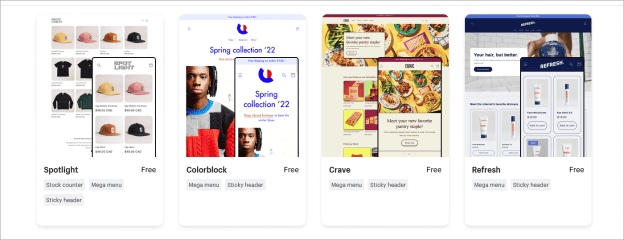
Once your store is set up and you’ve selected a name, Shopify will prompt you to add your first product. However, it’s advisable to choose a theme for your website beforehand. The visual appeal of your website is crucial in attracting and retaining customers. While high-quality images play a part, selecting an appropriate theme is equally important.
To choose a theme, navigate to the admin panel of your Shopify store. Go to ‘Sales Channels’, select ‘Online Store’, then ‘Themes’, and click on ‘Visit Theme Store’. Within the theme store, you can browse categories to find themes specifically designed for a restaurant’s Shopify website. There is an array of excellent themes available, including free options.
For more tailored needs, consider investing in a paid theme, which typically costs around $200 for a one-time purchase. Once you’ve chosen your theme, you can customize it to fit your unique brand. Begin by going to ‘Sales Channels’, then ‘Online Store’, select ‘Themes’, and click on the ‘Customize’ button for your chosen theme.
In the customization panel, you can adjust fonts, layout, and other design elements to suit your preferences. If you require more specific customization to achieve the exact look and functionality you desire, you may consider hiring a developer.
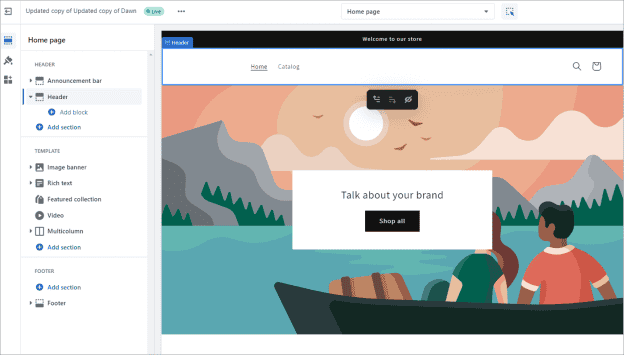
However, many free and paid themes offer comprehensive features that suffice for most restaurants and food businesses. These features often include a homepage, product pages, menu categories, an ‘about us’ section, contact information, blogs, and a checkout page, covering all the essentials for a robust online presence.
-
Create the Pages for Your Store
For a restaurant’s Shopify site, it’s not necessary to create a separate page for each menu item. People are more likely to discover your restaurant by searching for its name or the type of cuisine you serve rather than individual dishes. Search engine results for dish names often return recipes, not restaurant pages.
To enhance your online presence, focus on creating the following pages or sections:
- An “About Us” section sharing your story and vision.
- Contact information, including location, phone number, and business hours.
- Current promotions and special offers.
- A privacy policy outlining customer data usage.
- A menu listing available food and drink items.
- Delivery and takeaway options.
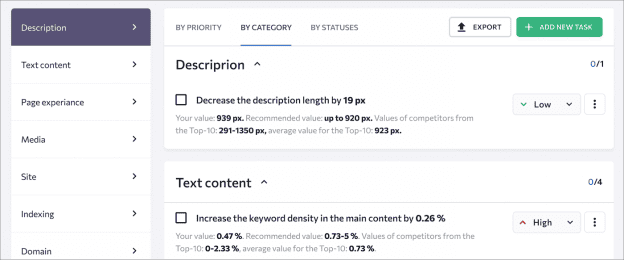
You can opt to dedicate a page to each of these elements or consolidate them into sections on a single homepage. However, for SEO purposes and to increase visibility, multiple pages are recommended.
When optimizing for search engines, start by researching keywords pertinent to your restaurant, like your business name, location, and cuisine. Tools such as Ahrefs can assist in identifying these keywords. Incorporate them into your webpage content and metadata to improve searchability on Google.
Further, enhance your pages for SEO by examining factors such as metadata, URL structure, content, imagery, keywords, and links for any errors using tools like SE Ranking On-page Checker. This tool evaluates your Shopify site for on-page optimization adherence, providing actionable recommendations. While some issues may require technical expertise, many can be addressed directly through the Shopify admin panel.
If SEO seems overwhelming, remember that it can take weeks or months for a new website to rank in search engine results. In the interim, you can learn at your own pace, seek assistance, or hire an SEO expert to optimize your site effectively.
-
Create Menu for Your Shopify Restaurant
Crafting an attractive and functional menu is crucial for your Shopify restaurant. It’s a key component that informs customers about your offerings and can significantly boost sales if done correctly. However, some common methods, such as uploading image files or PDFs, may not be the most effective due to their inflexibility and potential to slow down your website.
For instance, using high-resolution images or PDF files can lead to slower loading times, and any menu updates require replacing the entire file.
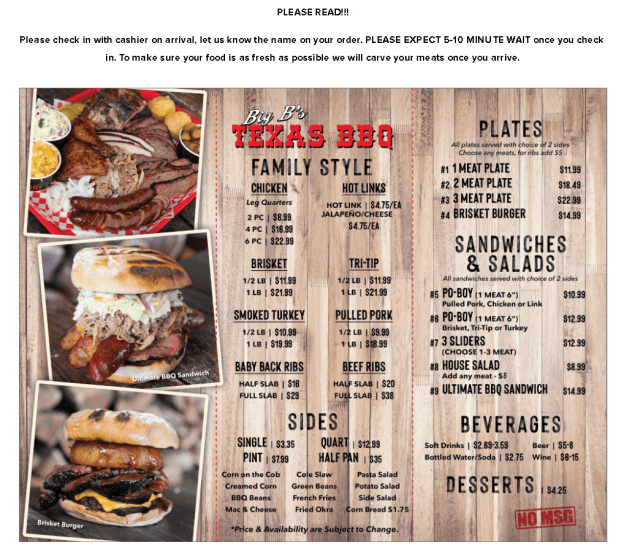
Image Source: bigbztexasbbq
While visually appealing, this method is not the most practical. A more efficient approach is to present your menu in a simple text format, which can be easily edited within the Shopify admin panel.
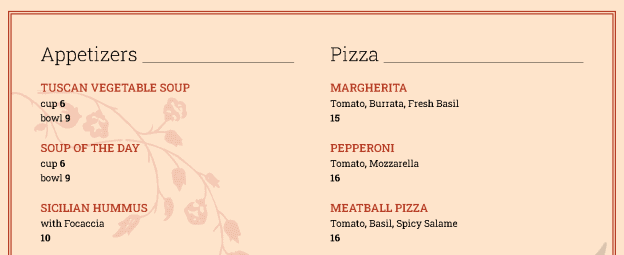
Image Source: cafeparadisonyc
This method not only facilitates quick updates but also improves your website’s SEO, as text is more easily indexed by search engines compared to images. To enhance visual appeal, you can integrate photos of your dishes to entice customers to place orders or book a table.
If you opt to include images, ensure they are professional and consistent in quality. You can use original photography or repurpose images from your social media accounts—but avoid using customer-submitted photos to maintain a uniform presentation.
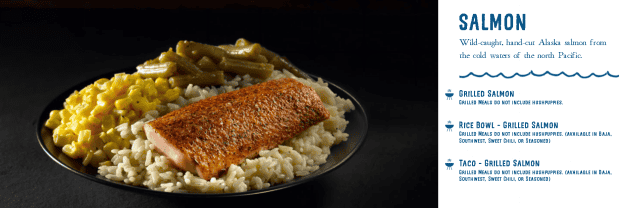
Image Source: ljsilvers
Consider a layout where each menu item is featured with a small accompanying image for a clean and organized look.
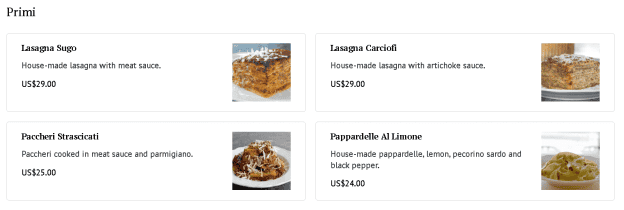
Image Source: i-sodi
On the menu display, each dish can be enclosed in a discreet box, providing a quick and clear view for users.
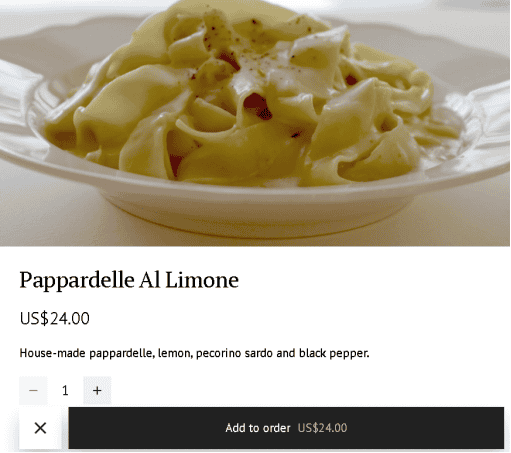
Image Source: i-sodi
Beyond the essentials like images, prices, and ingredients, remember to add details such as availability, potential allergens, and options for dietary preferences like vegan or gluten-free. These small touches can improve customer experience and cater to a wider audience.
Also Read: WHAT IS SEO MANAGEMENT? ULTIMATE GUIDE TO SUCCESS FOR SEO MANAGERS
-
Set Up Delivery and Takeaway
For restaurant businesses, tailoring Shopify’s default delivery settings to meet the unique needs of food service is essential. To configure these options, navigate to your store settings and look for the ‘Shipping and Delivery’ section.

Scroll to find the ‘Local Pickup and Delivery’ options, and enable those that apply to your service. You’ll need to specify your restaurant’s address and define the delivery radius or specific areas you serve. If Shopify’s built-in functionalities don’t align with your needs, consider exploring third-party apps on the Shopify marketplace.
With approximately 300 apps dedicated to facilitating local pickup and delivery, you’re likely to find one that suits your requirements. These apps vary in price, with many offering free starting plans. Before committing to any system, it’s crucial to conduct a test run to ensure it seamlessly integrates with your service model and to train your staff on how to manage the process efficiently.
-
Set Up Method of Payment
The final step in setting up your Shopify restaurant involves activating payment options. To accept online payments, enter your banking information and select your preferred methods. While PayPal is a common choice, Shopify Payments also allows you to accept credit card transactions directly.
Additionally, you can opt for various third-party payment gateways that collaborate with major credit card companies. Be mindful of any additional fees these services may impose, as they are independent of Shopify’s charges.
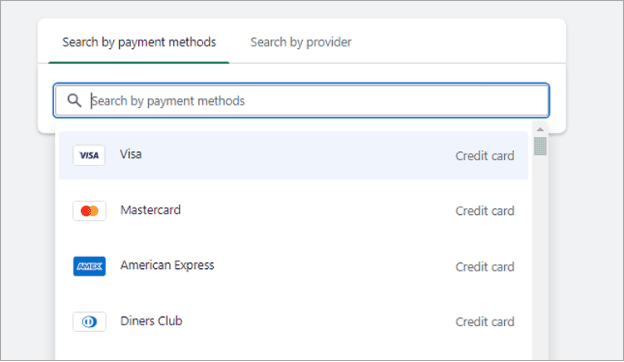
Don’t forget to enable ‘Payment on Delivery’ for local orders and consider adding a tipping option at checkout. This can be configured in the ‘Checkout’ settings within your Shopify admin panel, enhancing the customer’s checkout experience and potentially increasing your staff’s earnings through tips.
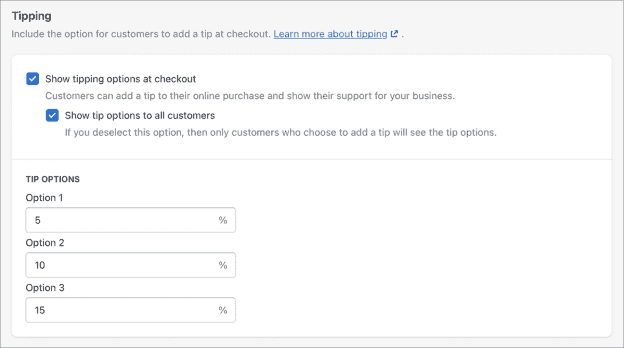
-
Configure Custom Domain
Your Shopify store initially operates under a default subdomain such as “restaurant.myshopify.com,” which may not encapsulate the essence of a high-end restaurant. A custom domain can significantly enhance your online presence and make it easier for customers to remember and find your restaurant online.
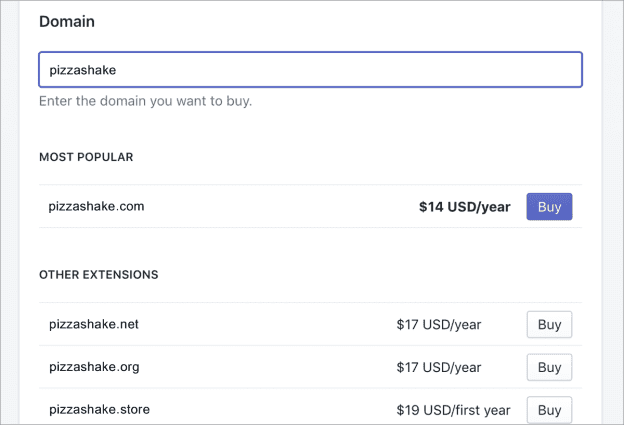
To acquire a domain directly through Shopify, access the main dashboard of the admin panel and select the option to add a custom domain. The average cost for a standard domain through Shopify is approximately $15 annually.
Alternatively, platforms like GoDaddy often offer competitive pricing on domain names, with discounts ranging from 50% to 70% for the first year. Once you have purchased your desired domain, you can connect it to your Shopify store via the domain management panel.
Factors to Consider While Choosing a Shopify App for Your Restaurant
When deciding on a Shopify app for your restaurant, the choice will be heavily influenced by the specific needs of your establishment. Whether you need an app to track inventory expiration or manage delivery services, consider the following questions for any app you evaluate:
- Can the app work with your current technology?
- Do you need to enter a code to begin using the app?
- Does the app change the look of your website? Will it make your website run slower?
- What kind of help does the app developer provide? Do they reply quickly?
- Do new users get a chance to try the service for free?
The Shopify ecosystem caters to a diverse range of industries, each with distinct requirements. A restaurant’s online store will benefit from apps tailored to the food service industry, offering functionality such as menu management, reservations, and delivery coordination. It is imperative to choose apps that not only meet your individual needs but are also geared towards the restaurant sector.
Top Shopify Apps for Restaurants
Enhance your restaurant’s Shopify account with specialized apps from the Shopify App Store to add functionality and improve customer engagement. Here are some top picks that could benefit your business:
-
ReConvert Upsell and Cross-Sell
In the restaurant business, the art of upselling — convincing customers to add more items like appetizers, drinks, or desserts to their order — can significantly boost profitability. ReConvert equips your Shopify store with upselling capabilities. For Shopify regular plan users, ReConvert enhances sales by enabling one-click additional purchases and suggesting further products on the thank-you page post-purchase.
Imagine a customer ordering a large pizza for pickup. With one-click upsells you could offer a side and drink at a discounted rate of 15% off. Subsequently, on the order confirmation page, you could present complimentary items or discounts for their next visit as a token of appreciation.
Such post-purchase upsell funnels can potentially convert an additional 2-15% of customers to make more purchases, increasing their average order value and your profit margins — a crucial advantage in the thin-margin restaurant industry.
-
Minta AI
Running a restaurant means juggling multiple tasks, and social media marketing can often fall by the wayside due to time and resource constraints. Minta AI leverages advanced AI technology to create up to 1,000 unique marketing videos that align with your restaurant’s branding.
This app integrates seamlessly with your Shopify store to generate promotional videos ideal for sharing across social platforms such as Instagram and TikTok and for enhancing your digital advertising campaigns.
Minta also allows for scheduling and automating future posts. It strategically publishes your content at optimal times for audience engagement, akin to having a dedicated creative and social media marketing team at a fraction of the cost.
-
We’re Closed
“We’re Closed” is a straightforward app designed to automatically halt order placements when your Shopify-powered restaurant is not operational, effectively preventing orders from coming in after business hours. Priced at only $3.99 monthly, it’s a practical tool for avoiding unnecessary refunds and the complications they bring.
-
Shopify POS
For those committed to leveraging the full potential of Shopify, incorporating the Shopify POS (Point of Sale) system is a prudent move. This app is intuitive and available at no extra cost, offering a unified platform for managing orders, including both deliveries and pickups, which streamlines your accounting and reporting workflows.
Shopify provides a compatible card reader (for which there might be a charge), enabling you to process in-person payments at your restaurant. This integration allows you to consolidate all payment processes within Shopify, simplifying financial management and giving you access to Shopify’s robust analytics tools.
-
Plobal Apps Mobile App Builder
While a website is an essential tool for discovering businesses, some customers prefer engaging through alternate platforms like social media, websites, or dedicated apps. Developing a bespoke mobile app through a specialized development team can be prohibitively costly, with prices often exceeding $20,000.
This figure is beyond the reach of many restaurants. However, for those utilizing Shopify, there’s a cost-effective alternative. The Plobal Apps Mobile App Builder is a Shopify app that facilitates the creation of an iOS or Android app for your restaurant. It utilizes a straightforward drag-and-drop interface, making app development accessible without the need for deep technical skills.
Although it might lack the advanced customization features of more expensive bespoke apps, it includes all the crucial functions necessary to serve your customers well. Plobal Mobile App Builder is priced at $199, with other app builder options in the Shopify App Store often falling within a similar price range.
-
Booking App by Webkul
The Booking App by Webkul is versatile, allowing for the arrangement of services or rentals. If your restaurant offers not just dining tables but also private rooms, this app could be particularly beneficial. It enables the scheduling of table reservations for set durations and can facilitate bookings for private rooms or even the entire restaurant for events.
Incorporating a reservation button on your website streamlines the process for customers, making it easy for them to secure a table directly online. The app also provides the flexibility to block out bookings during certain times or dates as required.
As the administrator, you have the authority to approve or deny reservations made via your website. Additionally, there’s the capability to adjust the dates or times of bookings when necessary. The app can also be employed to dispatch reminders, notifications, and other communications to ensure smooth operation and enhanced customer service.
-
UbarTab
UbarTab integrates seamlessly with the Shopify POS system, tailored to enhance the dining experience by streamlining the order and billing process. This innovative app allows for real-time addition of items to a customer’s ongoing order, facilitating the construction of an itemized bill upon the conclusion of their meal.
It maintains a comprehensive log of all food and drink orders, which proves invaluable when it comes time to calculate the final bill. The app’s versatility extends to its use across devices, enabling waitstaff to conveniently update orders via a mobile device that syncs directly with the main order on the system.
UbarTab is adept at managing discounts for customers, ensuring any promotions are applied effortlessly to orders. While it excels in the restaurant setting, it’s equally effective in a bar environment, accommodating the dynamic needs of both spaces.
Tips for Marketing Your Shopify Restaurant
Developing a robust online presence extends beyond website creation; it involves strategic marketing to propel your restaurant’s visibility on the internet. Here are some proven strategies for promoting your Shopify-enabled restaurant:
Leverage Social Media: While Google searches are crucial, don’t overlook the power of social media platforms like Instagram or TikTok. Visuals of mouth-watering dishes can captivate many potential customers on these platforms. When utilizing paid advertising, target the campaigns to resonate with the local audience you serve.
Grow Your Email List: Email marketing is a cost-effective promotional tool. Encourage sign-ups by offering incentives such as discounts, which can drive subscriptions and repeat business.
Invest in SEO: For your website to climb the search engine rankings, it needs optimization. This includes conducting keyword research and refining the technical elements of your site. Additionally, building backlinks from business directories and review sites can significantly boost your online presence.
Optimize Your Google Business Profile: Consistency in your online citations—ensuring your business’s name, address, and phone number are uniform across the web—along with a robust profile featuring numerous photos and customer reviews, can enhance your visibility in local search results.
Advantages of Shopify Restaurant Stores
Understanding why Shopify is an advantageous platform for creating a restaurant website is essential for modern business success.
-
Better Visibility in Search Results
A robust online presence is critical, as the absence of a well-optimized website could lead to potential customer loss daily. Most people rely on Google to discover dining options. A strong search engine presence, both in general and local queries, increases the likelihood of attracting more visitors to your site and, subsequently, to your restaurant. Furthermore, for those situated in specific locales, the necessity for costly targeted local search ads can be significantly reduced.
-
Increased Sales
Given the contemporary customer’s preference for digital interaction with businesses, having a website can inadvertently increase sales. Today’s diners seek multiple communication channels; some may phone in their reservations, while others prefer browsing menus or engaging with interactive content on platforms like Instagram. A considerable number choose to visit the website, perhaps to place a delivery order. Hence, the presence of a Shopify-powered website or app becomes crucial for driving sales.
-
Simplicity
While acknowledging the necessity of a website is one step, opting for Shopify as the creation platform is another. Custom websites might be costly and complex to manage, particularly for smaller marketing teams. Shopify stands out as a user-friendly and highly efficient alternative.
The hosting service is priced at approximately $32 per month, which is reasonable and dependable, even during high traffic periods. Additionally, Shopify offers an intuitive website builder tool, allowing for easy customization and management of your digital storefront to suit your specific business needs.
-
Customization
Shopify represents an optimal blend of a ready-to-use framework with extensive customization options to meet your unique needs. For those who require a straightforward solution, a basic website featuring a menu, location details, and a reservation contact number can be easily set up.
For restaurateurs aiming to enhance their customer service, Shopify facilitates a range of additional features. These might include automated newsletters announcing the latest promotions, local delivery options, or tools designed to encourage add-on purchases. With a plethora of apps available in the Shopify App Store, you can mold your website to serve your business objectives effectively.
Start Your Restaurant Business With Shopify
While creating a website may appear daunting, the payoff is considerable. Websites typically attract more traffic than social media platforms and don’t require constant content generation to maintain engagement. They offer customers the convenience of booking reservations and ordering for local delivery or pickup online, bypassing the need for phone interactions. Even if it takes some time to perfect your website’s appearance, it emerges as a formidable tool for boosting sales.
Operating a restaurant comes with its challenges. Utilize the Shopify apps mentioned earlier to streamline and enhance various aspects of your business operations. From online menus and payment processes to staff management, everything can be coordinated through your Shopify dashboard. This strategic move can place you ahead of the competition, amplify sales, and guarantee customer satisfaction with the online ordering experience.
FAQs
Is Shopify POS suitable for restaurants?
Yes, Shopify POS is an excellent system for restaurants. It provides valuable features tailored for the restaurant industry, such as order-taking, table management, and comprehensive order tracking, all of which are integral to daily operations.
Which Shopify themes are recommended for restaurants?
Popular Shopify themes for restaurants include ‘Ella’ by HaloThemes, ‘Foodly’ by BuddhaThemes, and ‘Fastor’ by RoarTheme. These themes are specifically designed for food services, offering unique functionalities and aesthetics.
How does Shopify benefit restaurants?
Shopify enables restaurants to establish an online presence where customers can browse menus, place orders, and make reservations. It integrates seamlessly with POS systems to streamline in-person transactions as well.
Can Shopify be used for restaurant takeaways?
Absolutely, Shopify is an excellent choice for managing takeaways. It supports online ordering, menu customization, and integration with delivery services, making it a comprehensive solution for restaurants offering takeaway services.

